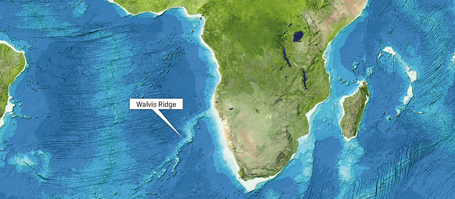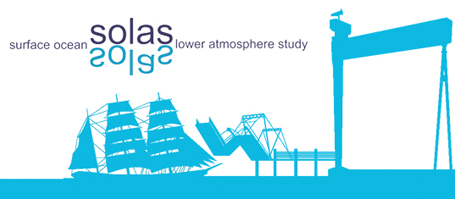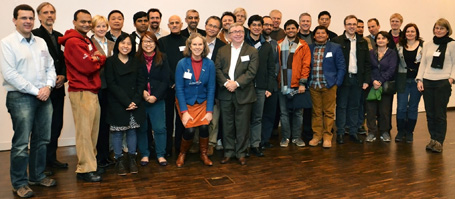It is nearly three times as long as the Alps and its highest mountains can easily compete with Mont Blanc: The Walvis Ridge is an impressive mountain range. Nevertheless it is hardly known and even less explored. Reason being, the Walvis Ridge is in the South Atlantic. Beginning at the archipelago Tristan da Cunha, it extends 3000 kilometers to the north east, reaching the coast of Namibia. The highest summits lie 200 meters below the water’s surface. The deep sea plain that these mountains stand on is partly more than 5000 meters deep. It is therefore no surprise that little is known about the Walvis Ridge. “Yet scientifically it is highly interesting as it can give us answers to central questions on plate tectonics and processes in the earth’s mantle,” says Prof. Dr. Kaj Hoernle from GEOMAR Helmholtz Centre for Ocean Research Kiel. Under his supervision, the German research vessel SONNE begins its five and a half week long expedition from Cape Town to the Walvis Ridge today. Alongside scientists from GEOMAR, colleagues from Geological Survey Namibia and from the natural history museum in Berlin will also be on board.
Geoscientists are interested in the Walvis Ridge due to the connection to extensive volcanic deposits in Namibia. This so called “Etendeka Igneous Province” probably developed 130 million years ago when a volcanic hot spot separated the continents Africa and South America. At the end of the Walvis Ridge, in the middle of the South Atlantic, the Tristan da Cunha islands mark the location of these hotspots today. “The Walvis Ridge is probably the track of this hotspot which it left when the continents moved across it,” explains volcanologist Dr Reinhard Werner from GEOMAR. Such hotspot tracks can be found across the globe. One famous example are the Hawaiian Islands and the connected Emperor seamount chain which reaches to Kamchatka. “The Walvis Ridge, however, is one of the only tracks that is connected to an igneous province on land,” continues Dr Werner. This is why it is important for the reconstruction of the continent separation process.
Nevertheless only very few sediment samples from this underwater mountain range exist. “Thus it is still not certain whether it really originates from hotspot volcanism or from other processes,” emphasizes Professor Hoernle. GEOMAR has been conducting research on the Walvis Ridge since 2008, yet there is still a lack in samples from the eastern part of the ridge. “We want to collect these,” says Professor Hoernle. With the help of the new and the already existing samples, the spatial and temporal development of the volcanism in the South Atlantic will be reconstructed accurately. This allows conclusions to be made on the hotspot volcanism processes as well as on volcanic activity at tectonic plate edges. “Ultimately we want to learn which process in the earth’s mantle formed these huge volcanic deposits, in order to increase our understanding of our planet’s dynamics,” says Professor Hoernle.
Parallel to the geoscientific research, the Expedition SO233 also has a biological component. The members from the natural history museum in Berlin will gather samples with special nets during the expedition in order to examine the biodiversity of invertebrate on the South Atlantic sea bed.
For those interested in following the work of the scientists, you can do this via the expedition blog. At www.oceanblogs.org/walvis2 the expedition members report about their research, about life on board and their experiences in the South Atlantic. “We look forward to reading comments and questions and, if technically possible, will try to answer them,” emphasizes Dr Werner.
Expedition at a glance:
SONNE-Expedition 233
Research Topic: Plate Tectonics and Volcanism in the South Atlantic
Scientific Expedition leader: Prof. Dr. Kaj Hoernle (GEOMAR)
Start: 14. May 2014, Cape Town (South Africa)
End: 21. June 2014, Wlavis Bay (Namibia)
Contact:
Prof. Dr. Kaj Hoernle (GEOMAR, FB4-Magmatic and Hydrothermal Systems)
khoernle@geomar.de
Jan Steffen (GEOMAR, Communication & Media), Tel.: (+49) 431 600-2811
jsteffen@geomar.de
…



